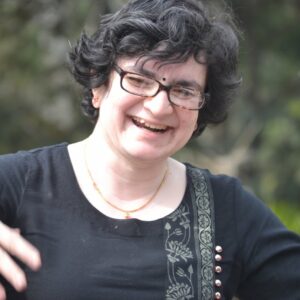Another year is drawing to a close. Where did it go? It went in a whirlwind. A whirlwind of workshops, symposia, guest talks, outreach events, awareness campaigns, Research council meetings, Wednesday seminars, colloquia and viva. This year, to the milieu, we added screening a movie inspired from an old colleague’s research. We had a weeklong extravaganza celebrating our science, our connections with the industry and with the clinic. We have had young school students come and spend time in the labs learning and teaching us the benefit of a fresh outlook. We have had student-led science discussions, idea competitions, sports events and gatherings.
As an year it has been remarkable in many other ways. This was the year we celebrated four women Nobel laureates; Kaitlin Kariko for mRNA vaccines, Anne L’Huillier for generating attosecond pulses of light, Caludia Goldin for studying women’s labour market outcomes and Narges Mohammadi for her fight against oppression of women. This was the year the first CRISPR therapy was given approval for Sickle cell anemia and Thalassemia.
This was also the year we made history by landing a rover on the South Pole of the moon. We also drilled through a mountain to rescue trapped workers, a triumph of engineering.
There were losses and grim news. We lost MS Swaminathan who revolutionized agriculture to feed millions. And today we are again standing at crossroads, in urgent need of another revolution to survive the effects of climate change on agriculture. As the hottest year on record draws to a close, we may find hope in the 28th Conference of Parties (COP28) resolution to transition away from fossil fuels.
As the new strain of SARS CoV2 is knocking at our doors, we may find hope in the ingenuity that the human species has exhibited till now to find solutions, solutions to disease, heatwaves, floods and pollution.
As the year draws to a close and we open our doors to the new year, we bid Blackberry a farewell and rejoice in the antics of Coco. We welcome two new batches of students and five young faculty members. We look to the world and to the expanded IGIB family for achievements worth celebrating and joys worth sharing so we may continue growing, growing for the better.
PS: This year also marks the year we conclude with a declaration: no Artificial Intelligence tools were used to write this editorial
Chetana Sachidanandan is a scientist-writer with a fascination for a striped fish that’s too small to eat and just too beautiful to describe.


